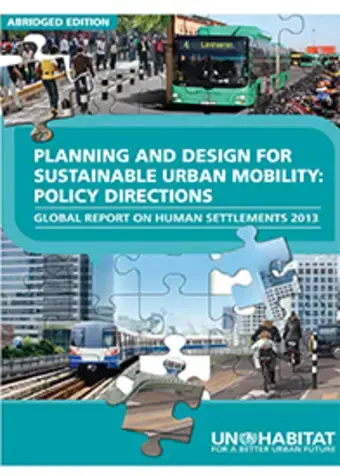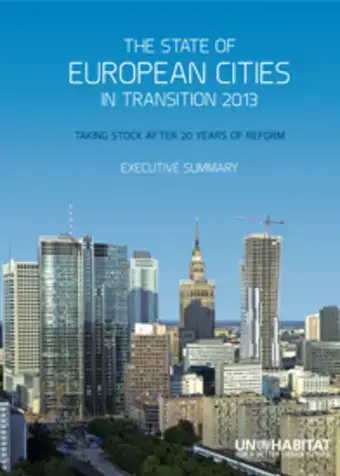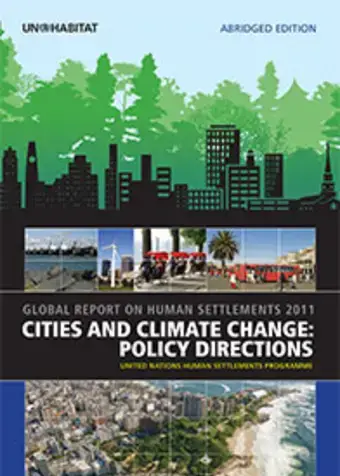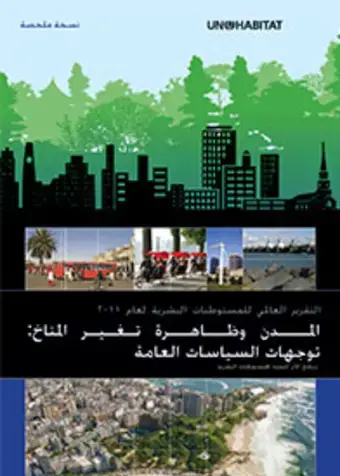Pakistan
Overview
Since 2005, UN-Habitat has supported Pakistan’s national government, provincial governments, city authorities and people on humanitarian and development efforts. UN-Habitat’s technical assistance in Pakistan includes diverse areas responding to country’s emerging needs ranging from, urban knowledge generation, municipal finance, urban poverty alleviation, community-based infrastructure, environment improvement, climate change and rehabilitation and reconstruction, etc.
Pakistan is one of the most urbanized nations in South Asia with 36.4 percent of the urban population. The urban population has almost doubled from 43 million to 75 million between 1998 and 2017. With Pakistan’s urban population expected to increase by about 40 million people to an estimated 118 million by 2030, immediate action is needed to transform the country’s cities into livable, prosperous places.
About 54 percent of the urban population lives in ten major cities, having populations exceeding one million. Pakistani cities need to evidence-based planning and manage their development if they are to meet the needs and demands of their citizens. Basic information for urban areas does not exist, is outdated, or not shared. To pro-actively guide the growth of Pakistan's cities and harness urbanization as a driver of development requires resolve and action by all the provinces.
More than 50 percent of the population of major cities lives in slums and squatter settlements (Katchi Abadi).
Housing deficit have increased from 4.3 million in 1998 to about 9 million in 2015
Donors and partners
UN-Habitat in Pakistan works through partnerships closely with the Government of Pakistan, particularly with national and local institutions, cities and CSOs through its technical assistance and advocacy. UN-Habitat engages communities through People’s Process for actions towards improving the lives of vulnerable communities.
Donors
Contact
Legacy content
- Total value of UN-Habitat investments (2008-2013): US$ 78,984,291
- Total number of UN-Habitat projects (2008-2013): 43 projects
- Main donors: Department For International Development (DFID) – United Kingdom, United Nations Central Emergency Response Fund (UN-CERF), United Nations High Commissioner for Refugees (UNHCR), Korean International Cooperation Agency (KOICA), United Nations Population Fund (UNFPA), Multi Donor Trust Fund – Spain
- Implementing partners: local government agencies such as the Earthquake Reconstruction and Rehabilitation Authority (ERRA) and the National Disaster Management Authority (NDMA); local authorities; other UN agencies such as UNDP, UNESCO, UNICEF and UNHCR; local and international NGOs and CBOs
Pakistan is the fastest urbanizing country in South Asia. The current level of urban population of 36% in 2013 is projected to increase to 50% by 2030. There is no urban policy for the country but efforts are being made to move towards one. Although the recently adopted 18th constitutional amendment has devolved the subject of urban development from the federal to the provincial governments, the provincial governments have not yet started the work on urban policy.
General information
Two urban forums have been held to date; one in Lahore in 2011 with UN-Habitat support and the other in January 2014 in Karachi. UN-Habitat participated in this 2nd Pakistan urban forum held in Karachi and presented the framework of creating a new urban agenda for Pakistan that would feed into the Habitat-III conference scheduled for 2016. The Government of Pakistan is currently preparing Vision 2025 for Pakistan and is also preparing the five year plan (2014-2019).
UN-Habitat is closely working with its counterpart agency, Climate Change Division (CCD) and with the support of the core group is carving out a vision for cities in the country. The CCD has already notified a National Habitat Committee and its first meeting will be held soon. UN-Habitat has undertaken slum studies in Peshawar, Kohat and Islamabad. These studies are aimed at facilitating the government in upgrading urban slums/informal settlements and developing urban policies, including land use planning and governance.
UN-Habitat’s WASH community-based programming in Pakistan has significantly contributed to national and provincial drinking water, sanitation and Behaviour Change Communication policies aimed at improving urban health, water and hygienic sanitation through strengthened urban communication networks within communities and service providers.
The Government of Pakistan was facilitated in the drafting of National Sanitation Action Plan (NSAP 2010-2015), derived from the National Sanitation Policy, which provided a roadmap for national and sub-national governments in achieving the MDGs.
UN-Habitat projects in Pakistan
UN-Habitat Pakistan’s projects in the country are largely focused at humanitarian support in response to natural and human-made disasters. UN-Habitat’s unique approach to disaster management, reconstruction and recovery is based on its long-standing experience in working closely with communities, provincial and local authorities to meet their needs for shelter and services, while simultaneously addressing the longer-term development needs for land, secure tenure and infrastructure.
Implementation modality through community participation or people’s approach has resulted in confidence building, capacity development, increased ownership and accountability of stakeholders at various levels that contribute to sustainability of UN-Habitat’s initiatives.
Further, UN-Habitat’s implementation of humanitarian and development projects take into account cross-cutting themes on gender, human rights and environment. UN-Habitat’s integrated approach to shelter, WASH, community infrastructure and land has ensured that benefits accrue to the community as a whole, not just individual families.
There has been special focus on increased access to water, sanitation and hygiene facilities for vulnerable and extremely vulnerable groups. Local communities have been revitalized through work activities benefiting thousands of households. Social mobilization of communities ensured their full involvement in implementation activities.
A specific example of the above approach is UN-Habitat’s HySter Programme for WASH activities. HySter is a consolidated arrangement of various innovative successful pilot projects of UN-Habitat in Pakistan. HySter is developed to address all developmental challenges with a paradigm shift of looking at these challenges as an opportunity rather than as part of the problem.
It takes the humanitarian situation as an opportunity to start the programme leading to sustainable development and thereby harnessing all available resources in the present context to make the MDG’s a reality and beyond that, making donors and state governments responsible for fulfilling the right to water and sanitation for all. HySter also provides room for the private sector to make profit while addressing the development challenge of reaching all with safe drinking water and improved sanitation.
Contacts
Bella Evidente OIC Country Programme Manager UN-Habitat Pakistan Level Five, Serena Business Complex P.O. Box 1980, GPO Code 44000 Islamabad, Pakistan Email: mailbox@unhabitat.org.pk Landline: +92 51 835 5790Fax: +92 51 835 7359
Images





 UN-Habitat envisions well-planned, well-governed, and efficient cities and other human settlements, with adequate housing, infrastructure, and universal access to employment and basic services such as water, energy, and sanitation. To achieve these goals, derived from the
UN-Habitat envisions well-planned, well-governed, and efficient cities and other human settlements, with adequate housing, infrastructure, and universal access to employment and basic services such as water, energy, and sanitation. To achieve these goals, derived from the 


